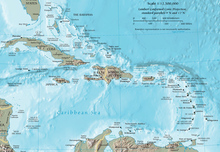SMS Hansa (1872)
 Hansa in Kiel in the 1880s
| |
| Class overview | |
|---|---|
| Operators | |
| Preceded by | König Wilhelm |
| Succeeded by | Preussen class |
| Completed | 1 |
| Scrapped | 1 |
| History | |
| Name | SMS Hansa |
| Builder | Danzig |
| Laid down | 1868 |
| Launched | 26 October 1872 |
| Commissioned | 19 May 1875 |
| Stricken | 6 August 1888 |
| Fate | Broken up, 1906 |
| General characteristics | |
| Type | Armored corvette |
| Displacement | |
| Length | 73.50 m (241.1 ft) |
| Beam | 14.10 m (46.3 ft) |
| Draft | 5.74 m (18.8 ft) |
| Installed power |
|
| Propulsion |
|
| Sail plan | Ship rig , 1,760 m2 (18,900 sq ft) |
| Speed | 12 knots (22 km/h; 14 mph) |
| Range | 1,330 nmi (2,460 km; 1,530 mi) at 10 knots (19 km/h; 12 mph) |
| Boats & landing craft carried | 10 |
| Crew |
|
| Armament | 8 x 21 cm (8.3 in) L/19 guns |
| Armor |
|
SMS Hansa
Hansa saw little use in her first years of service, and only took part in fleet exercises in the 1875 training year. She made a major overseas cruise to Central and South America from 1878 to 1880, during which time she protected German nationals in the region during the
Design
Development of a small armored
General characteristics and machinery

Hansa was 71.73 meters (235.3 ft)
The German navy found the ship to be very stiff in her sea-keeping qualities. Steering was controlled by a single
Hansa was powered by a single horizontal three-cylinder
Armament and armor
Hansa was armed with a
Hansa's armor consisted of
Service history
Construction and initial service

Hansa was
From there, she was to sail to
Through the 1870s, the German armored fleet typically saw active service during the summer months. Over the winter, most of the vessels were placed in reserve with one or two kept in a state of reduced commission as
Overseas deployment

She remained out of commission until 22 July 1878, when she returned to service for a deployment to the
After leaving Venezuelan waters, Hansa sailed for
Following the Chilean victory in the Battle of Angamos on 8 October, the Chilean Navy planned to bombard Callao, which had been declared an open city. Heusner protested the planned attack, which led the Chilean government to cancel it.[13] Hansa cruised off the Peruvian and Chilean coast through June 1880,[11] and throughout this period, she repeatedly sent landing parties ashore in Callao, Lima, and Arica to protect Germans in those cities. Hyäne arrived in Valparaiso on 1 February 1880 and Freya joined the German ships there on 3 March. The war soon turned decisively in Chile's favor, which permitted the Germans to recall Hyäne on 3 April, followed quickly by Freya on 14 April. The steam corvette Bismarck arrived in the area on 26 May, the same day that Chile defeated Bolivia in the Battle of Tacna, knocking the latter out of the war. Bismarck operated with Hansa until July, when the latter vessel began the voyage home. In mid-August, the steam corvette Ariadne met Hansa in Coronel, Chile, where they officially transferred responsibility for the region on 11 August. Hansa thereafter departed for Germany, eventually arriving back in Kiel on 22 October. There, she was decommissioned on 8 November.[16]
Later career
After being decommissioned, the ship underwent an overhaul and then remained out of service until February 1884.
By early 1888, it was found that her hull was badly corroded;
Footnotes
Notes
- Seiner Majestät Schiff", or "His Majesty's Ship".
- ^ Peru eventually released the vessel in January 1880, citing the loyalty of the German expatriate community in the country.[13]
- Cantonal Revolution in Spain in 1873, Reinhold von Werner significantly exceeded his authority by directly engaging the rebel faction with a German and British force he commanded. His actions prompted an uproar in Germany and upon his return, Otto von Bismarck relieved him of command and forbade any further attempts at gunboat diplomacy.[14][15]
Citations
- ^ a b Dodson, p. 19.
- ^ Sondhaus 2001, pp. 59–61.
- ^ a b Gröner, p. 4.
- ^ a b c d e f g h i j Gröner, p. 5.
- ^ a b Lyon, p. 244.
- ^ Sondhaus 2001, p. 120.
- ^ a b c d Hildebrand, Röhr, & Steinmetz, p. 89.
- ^ Lyon, pp. 242–244.
- ^ Gröner, pp. 1–5.
- ^ Dodson, p. 20.
- ^ a b Dodson, pp. 25–26.
- ^ Hildebrand, Röhr, & Steinmetz, pp. 88–90.
- ^ a b c Hildebrand, Röhr, & Steinmetz, p. 90.
- ^ Sondhaus 1997, pp. 118–120.
- ^ Sondhaus 2001, p. 122.
- ^ Hildebrand, Röhr, & Steinmetz, pp. 90–91.
- ^ a b Dodson, p. 32.
- ^ a b c Hildebrand, Röhr, & Steinmetz, p. 91.
- ^ Dodson, p. 30.
- ^ Hildebrand, Röhr, & Steinmetz, pp. 88, 91.
References
- ISBN 978-1-84832-229-5.
- ISBN 978-0-87021-790-6.
- Hildebrand, Hans H.; Röhr, Albert & Steinmetz, Hans-Otto (1993). Die Deutschen Kriegsschiffe: Biographien – ein Spiegel der Marinegeschichte von 1815 bis zur Gegenwart [The German Warships: Biographies − A Reflection of Naval History from 1815 to the Present] (in German). Vol. 4. Ratingen: Mundus Verlag. ISBN 978-3-7822-0382-1.
- Lyon, Hugh (1979). "Germany". In Gardiner, Robert; Chesneau, Roger; Kolesnik, Eugene M. (eds.). Conway's All the World's Fighting Ships 1860–1905. Greenwich: Conway Maritime Press. ISBN 978-0-85177-133-5.
- Sondhaus, Lawrence (1997). Preparing for Weltpolitik: German Sea Power Before the Tirpitz Era. Annapolis: Naval Institute Press. ISBN 978-1-55750-745-7.
- Sondhaus, Lawrence (2001). Naval Warfare, 1815–1914. London: Routledge. ISBN 978-0-415-21478-0.
